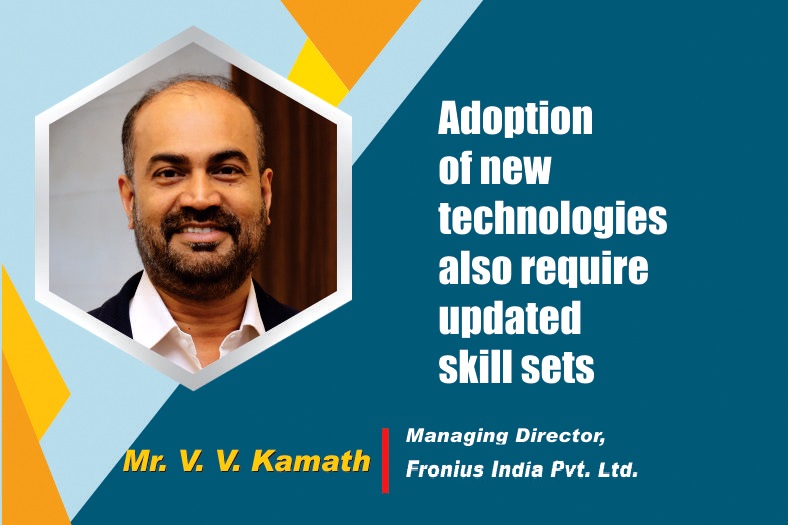Adoption of new technologies also require updated skill sets
By OEM Update Editorial February 1, 2022 4:30 pm IST
The adaptive process control and innovation in welding arc has enabled residual welding stresses and component distortion to be reduced.
How can automation yield in adding finishing to the products?
Reproducibility of welding is most important for production lines producing numbers of components for automotive industries like two-wheeler and four-wheeler etc. Robotic and special purpose machines (SPM) are mostly employed for such applications.
The digital power sources together with its intelligent control circuitry and sensing mechanism coupled with high speed data communication, is having an impact on all industries that use welding technology, such as automotive, engineering, aerospace, railways or shipbuilding. The technology is significantly changing the quality requirements for the welded products. The adaptive process control and innovation in welding arc has enabled residual welding stresses and component distortion to be reduced. Also intuitive intelligent technologies have taken control over the whole welding process solution e.g, fusion penetration stabiliser, which even allows to produce high quality welding, by stabilising the process, even if welders stick out distances vary due to position or skill.
An integrated programmable automation system can monitor all process parameters and can control all the aspects of quality and finishing of the final product.
How are unsafe welding practises affecting the quality and precision of welded products?
We are talking about quality requirements for a bogie frame of a railway coach which will carry lakhs of people on high speed metro, or, a nuclear submarine or, the propellant tank of a spacecraft. The cost of any mistake can be catastrophic. The root cause analysis report revealed that welding joint failure was the main reason for the collapse of the Skywalk near Mumbai CST Railway station which caused the loss of many innocent lives. Many such examples will establish the fact that welding quality has been taken for granted for most of the cases. Though industries are adopting new technologies which require updated skill set but education institutes are still following age old syllabus and curriculum with same old infrastructure. Hence there is a big gap between reality and requirement and this can lead to unsafe welding practises and in turn affects the quality of welding.How do you define the popular automation technologies in welding?
At Fronius, Welding Automation is to implement mechanised solutions for Arc welding (TIG, Plasma, MIG-MAG) with high customer benefit for challenging applications. Welding mechanisation can be achieved by introducing robotic arms, special purpose machines or simpler components like welding torch carriages, turntables, etc. Further there can be addition of welding seam tracking devices, flow sensors, camera, etc. to get desired quality of weld. On a broader classification Welding Automation can be subdivided into categories:
- Longitudinal Seam Welding Automation
- Circular Seam Welding Automation
- Overlay Welding Automation
- Orbital welding automation
- Customer specific system solutions.
Cookie Consent
We use cookies to personalize your experience. By continuing to visit this website you agree to our Terms & Conditions, Privacy Policy and Cookie Policy.


















